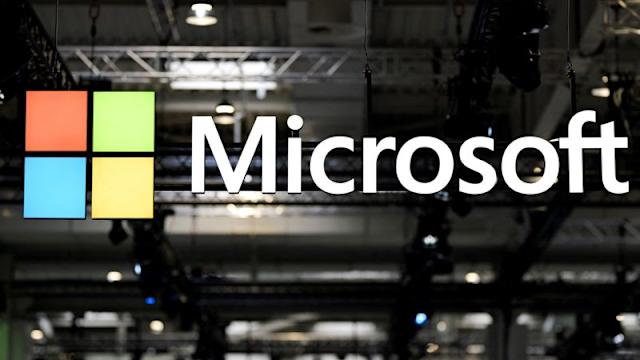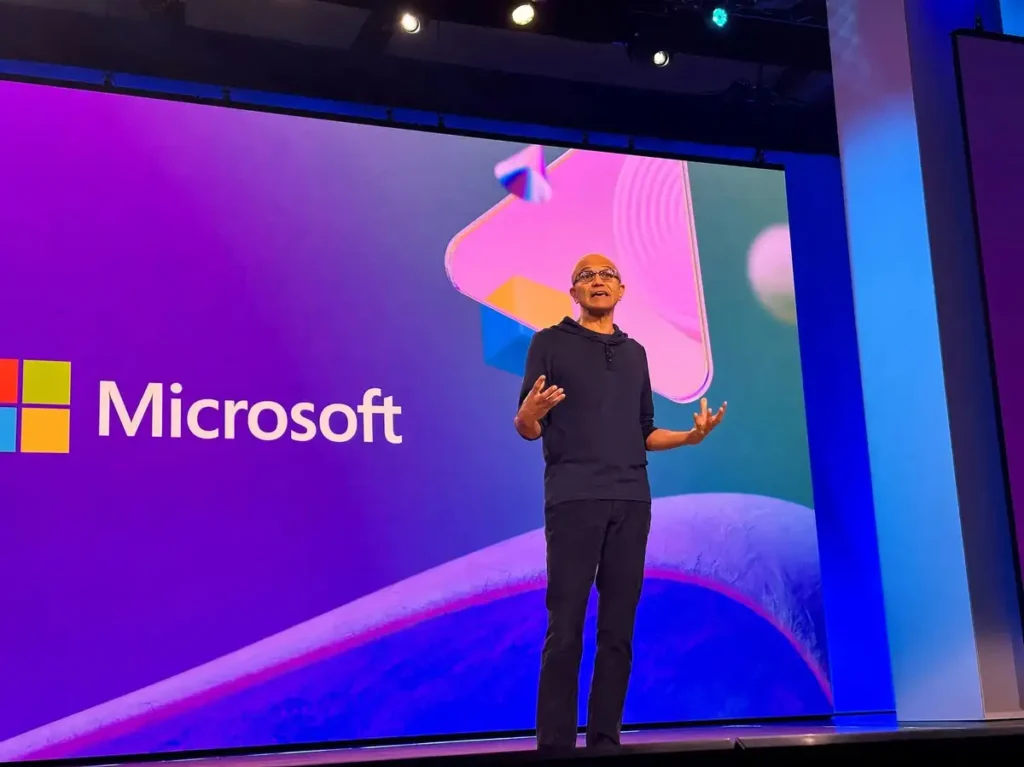Microsoft commercial business CEO moves are making headlines as Satya Nadella, the company’s long-standing leader, takes bold steps to reinvent the technology giant. Nadella has appointed a new CEO to oversee Microsoft’s commercial business, signaling a strategic shift in how the company approaches growth, leadership, and innovation. This move is not just a routine management change; it represents a carefully thought-out plan to align Microsoft’s commercial operations with the rapidly evolving tech landscape, particularly in areas such as artificial intelligence, cloud computing, and enterprise solutions.
A Bold Leadership Decision
Satya Nadella has led Microsoft through years of transformation, turning the company into one of the world’s most influential technology firms. Now, he has chosen to delegate responsibility for Microsoft’s commercial business to a new CEO. This commercial business encompasses the company’s core operations in sales, marketing, partner solutions, and enterprise services. By appointing a dedicated leader for this critical area, Nadella can focus more on technological innovation, strategy, and long-term growth.
The move comes at a time when Microsoft faces both immense opportunities and challenges. On one hand, the company is at the forefront of artificial intelligence, cloud computing, and enterprise software. On the other hand, it operates in a competitive landscape where agility, speed, and customer-centric approaches are vital. Appointing a new CEO for the commercial business is designed to create sharper focus on day-to-day operations while maintaining strategic oversight for technological advancement.

The Role of the New CEO
The newly appointed CEO will oversee the commercial business, which constitutes a significant portion of Microsoft’s revenue. This includes management of sales teams, customer success strategies, marketing initiatives, partner networks, and global operations. Essentially, this role consolidates various aspects of Microsoft’s commercial activities under one leader.
By having a dedicated CEO for commercial operations, Microsoft aims to improve efficiency, create stronger alignment across business units, and ensure that customer needs are met more effectively. The role also emphasizes collaboration between technical development teams and commercial teams, ensuring that innovations are matched with market-ready solutions.

Why This Reinvention Matters
Microsoft’s decision to reorganize its leadership highlights the company’s commitment to continuous reinvention. In the fast-moving technology industry, standing still is not an option. Consumer expectations, business needs, and competitive pressures are constantly evolving. By appointing a new CEO to run the commercial business, Nadella is effectively creating a structure that allows Microsoft to respond faster to these dynamics.
Moreover, this move reflects a broader trend in large technology companies: the separation of technical innovation from commercial execution. By focusing on what he calls “founder mode,” Nadella can dedicate more time to strategic initiatives, particularly in artificial intelligence and cloud infrastructure, while the new CEO drives commercial excellence.
Focus on Artificial Intelligence and Cloud Growth
One of the key reasons behind this leadership change is Microsoft’s growing focus on artificial intelligence. AI is reshaping the tech landscape, and Microsoft has been investing heavily in AI-powered solutions, from business software to cloud services. By appointing a CEO to handle commercial business, Nadella can concentrate on advancing AI technologies, developing new products, and strengthening Microsoft’s infrastructure.
Cloud computing remains another critical area. Microsoft Azure has become one of the leading cloud platforms globally, competing with other tech giants. Ensuring that cloud offerings align with customer demands and market trends requires strong commercial leadership. The new CEO will play a pivotal role in bridging the gap between innovation and market adoption, ensuring that Microsoft’s cloud solutions continue to grow and succeed.
Strengthening Customer Relationships
The commercial business is fundamentally about customers. Microsoft’s clients range from small businesses to Fortune 500 corporations. Managing these relationships effectively requires a leader who can oversee multiple facets of customer interaction, including sales, support, and partnership programs.
With the new CEO in place, Microsoft aims to enhance customer engagement by streamlining communication, improving service delivery, and creating more personalized solutions. This approach not only strengthens client relationships but also supports Microsoft’s broader goal of becoming a trusted technology partner for businesses worldwide.

Driving Operational Efficiency
Another important aspect of this reinvention is operational efficiency. Microsoft’s commercial operations are vast, spanning numerous countries and involving thousands of employees. Coordinating these operations requires careful planning, clear leadership, and strong execution.
By consolidating commercial functions under one CEO, Microsoft expects to improve decision-making, eliminate redundancies, and optimize processes. This focus on efficiency is essential for maintaining competitiveness, especially as the company navigates global market challenges, evolving customer expectations, and rapid technological change.
Encouraging Innovation Across Business Units
While the new CEO handles commercial operations, Nadella remains focused on driving innovation across Microsoft. This separation of responsibilities allows for greater creativity and risk-taking in technical development. Teams can experiment with new AI technologies, develop next-generation cloud solutions, and explore emerging markets without being constrained by immediate commercial pressures.
In essence, this leadership model creates a balance between operational excellence and innovation. It allows Microsoft to stay ahead of competitors while maintaining strong financial performance and market relevance.
Preparing for the Future
Microsoft’s reinvention is also about long-term sustainability. Technology companies must anticipate trends and prepare for future opportunities. By reorganizing leadership, Microsoft ensures that both its commercial and technical divisions are positioned to respond effectively to industry shifts.
This forward-looking approach includes preparing for AI-driven transformations, new enterprise solutions, and changes in customer behavior. The new CEO will oversee strategies to expand market share, strengthen partnerships, and optimize revenue streams. Meanwhile, Nadella will focus on the technologies that will define Microsoft’s future.
Industry Reactions
Industry observers have widely recognized Microsoft’s move as strategic and timely. By separating commercial leadership from technical oversight, the company sets an example of how large tech firms can adapt to changing market conditions. Analysts note that this structure may enhance Microsoft’s agility, allowing the company to innovate faster while maintaining strong operational performance.
Moreover, this approach may influence other tech giants to consider similar reorganizations. The balance between technical innovation and commercial execution is increasingly critical in a world where technology evolves rapidly and market dynamics shift constantly.
Key Takeaways
- Strategic Delegation: Nadella’s decision to appoint a new CEO highlights the importance of focused leadership for large technology operations.
- Commercial Focus: The commercial business, which generates the majority of Microsoft’s revenue, now has dedicated leadership to optimize performance and customer engagement.
- AI and Cloud Priorities: Separating leadership roles allows Nadella to concentrate on AI, cloud infrastructure, and long-term innovation.
- Operational Efficiency: Consolidating commercial functions under one leader aims to improve coordination, streamline processes, and enhance decision-making.
- Customer-Centric Approach: Stronger focus on customer relationships ensures that Microsoft continues to meet business needs effectively.
- Future-Ready Strategy: This leadership model positions Microsoft to respond to emerging trends, competitive pressures, and evolving technology landscapes.

Looking Ahead
Microsoft’s appointment of a new commercial business CEO is not just a change in personnel—it is a reinvention of how the company approaches growth, innovation, and leadership. This move highlights the importance of clear responsibility, operational focus, and strategic oversight in a global technology company.
As the new CEO takes charge of Microsoft’s commercial operations, the company is expected to enhance its market responsiveness, improve customer satisfaction, and drive revenue growth. Simultaneously, Nadella’s continued focus on AI and cloud technologies ensures that Microsoft remains at the forefront of technological innovation.
By combining operational excellence with visionary leadership, Microsoft is setting the stage for a future where it can remain competitive, agile, and innovative. The company’s commercial business will thrive under focused leadership, while its technical initiatives will continue to break new ground.
Conclusion
Satya Nadella’s bold move to appoint a new CEO for Microsoft’s commercial business represents a strategic reinvention. It reflects a deep understanding of the challenges and opportunities facing the company in today’s fast-paced technology landscape. By delegating commercial responsibilities, Nadella can focus on innovation, particularly in AI and cloud computing, while the new CEO drives operational excellence, customer engagement, and revenue growth.
This reorganization positions Microsoft to navigate the complexities of the modern tech market successfully. It ensures that both commercial and technical functions operate efficiently, allowing the company to remain a leader in the industry. With clear leadership, strategic focus, and a commitment to innovation, Microsoft is poised to continue its remarkable journey of growth, transformation, and technological advancement.
Microsoft commercial business CEO leadership is now more focused, future-ready, and capable of driving both innovation and commercial success. This move not only strengthens Microsoft internally but also sets an example for the entire technology sector on how to balance operational efficiency with forward-looking innovation.
Do follow UAE Stories on Instagram
Read Next – London Court Confirms Djibouti’s Illegal Seizure of Doraleh Terminal














